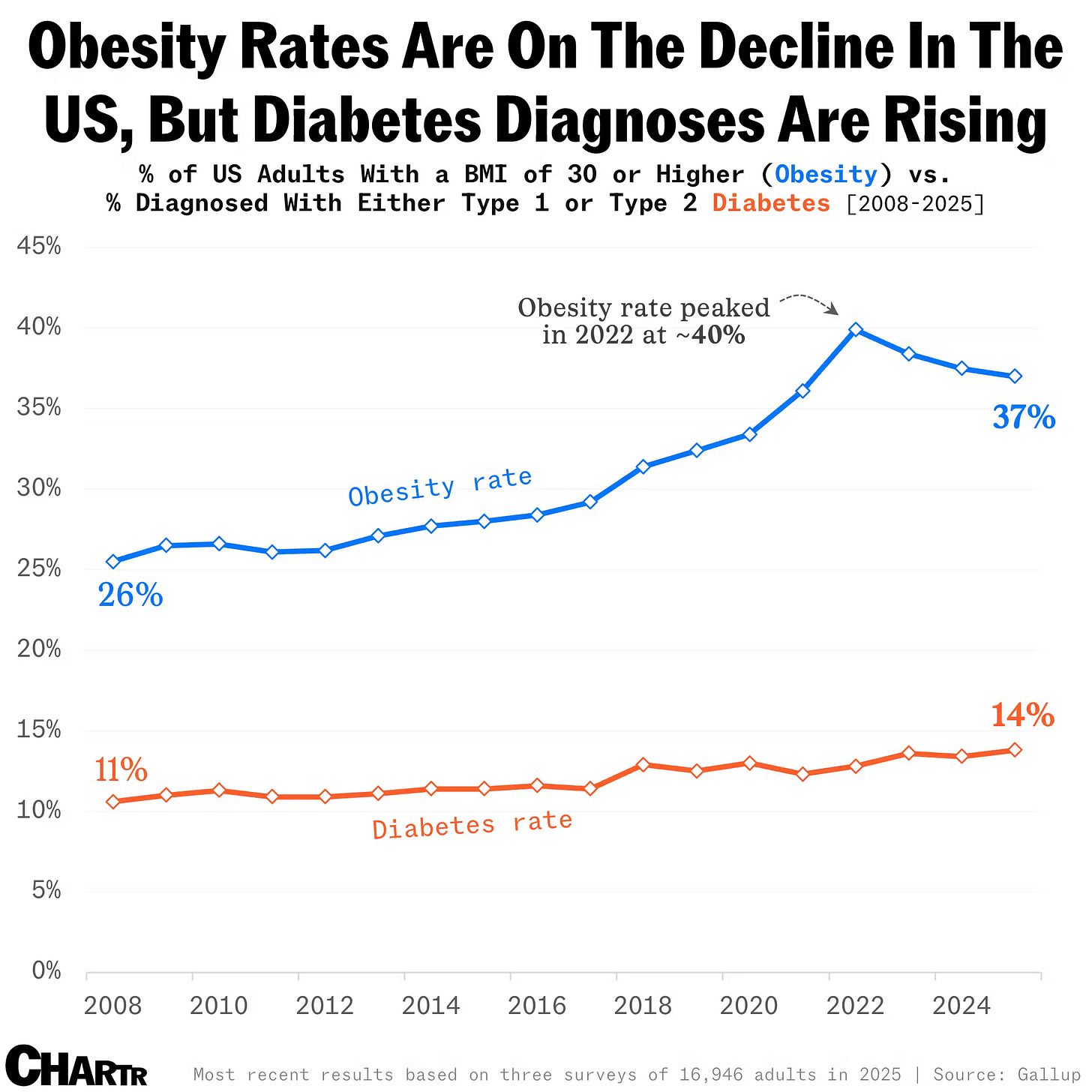Obesity falls but diabetes keeps rising
Five charts to start your day
We are living longer, but not necessarily better. Across much of the world, health outcomes are improving on paper, yet beneath the surface the story is more complicated. America’s obesity rate is finally edging down, but diabetes keeps rising. It’s as if the body mass is shrinking while the metabolic damage remains – a reminder that slimming a nation doesn’t always mean healing it.
There are bright spots. Overdose deaths are falling sharply in many US counties, signalling that public health campaigns and better treatments are working. But the improvements are patchy, and the opioid crisis remains deeply rooted in some regions. Progress in one place is offset by tragedy in another.
Even in the medical industry itself, imbalance persists. The world’s top MedTech executives, who sit atop companies driving innovation in global health, are rewarded in dramatically different ways. American CEOs earn roughly three times their European peers – a pay gap that mirrors wider inequalities in how value, risk and care are distributed across borders.
Quick note — Killer Charts has been $8/month and $80/year since launch two years ago. From 1 December the price for new subscribers will rise to $10/month and $100/year. If you’ve been meaning to upgrade, you can lock in the old rate for life here.CHART 1 • Obesity falls but diabetes keeps rising
After decades of steady increase, US obesity rates have finally started to edge down. The share of adults with a BMI over 30 peaked at around 40% in 2022 and has since slipped to 37%. It’s a small drop, but after years of upward momentum, it feels significant.
Yet the trend isn’t as healthy as it looks. Diabetes diagnoses continue to rise, climbing from 11% in 2008 to 14% this year. The timing is striking, just as obesity levels stabilise, metabolic disease keeps spreading. It raises questions about diet quality, ageing, and whether new weight-loss drugs are masking deeper health problems rather than solving them.
Is this the start of a genuine improvement in public health, or are we just treating the symptoms of a wider problem?
Source: Chartr
Health progress is rarely linear. Every solution seems to introduce a new imbalance – a trade-off between cure and consequence. We conquer one disease and reveal another. We extend lifespan but not healthspan. We create technologies that heal, yet reward systems that divide. It’s a pattern as old as medicine itself.
What’s changing now is scale. The health of entire populations is being reshaped by global forces – drugs, diets, data and demography – moving faster than our institutions can adapt. The real challenge is no longer just curing illness, but creating societies that stay well in the first place.
I’ve got four more charts that expand on this story, but they’re for paid subscribers. Consider joining if you want the full edition.




